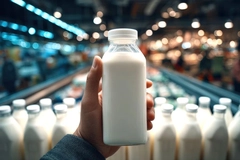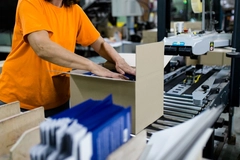Australia pledges to eliminate “killer plastics” by 2025, draws praise from marine conservationists

20 Apr 2021 --- The Australian government has pledged to phase out some high-polluting single-use plastic items by 2025, after a virtual meeting between the nation’s environment ministers resulted in an agreement to harmonize regional sustainability commitments.
As part of the National Waste Policy Action Plan, eight “problematic and unnecessary” plastic products were identified, which industry will have to phase out nationally by 2025.
These are: plastic cutlery, straws, lightweight plastic bags, polystyrene food containers and consumer good packaging, plastic misleadingly labeled as degradable and microbeads in personal care products.
The decision has been hailed as a necessary advancement on industry commitments, which have been optional until now.
Darren Kindleysides, CEO of the Australian Marine Conservation Society (AMCS), released a statement praising the legislation as necessary to protect the country’s sea life.
“This is welcome progress on these killer plastics and will help to ease the pressure on our marine wildlife.”
“AMCS has been calling for national consistency and agreement on the bans of dangerous single-use plastics to give businesses certainty and ease consumer confusion.”
Unifying commitments
The meeting unified commitments that were already underway in many of Australia’s territories and states.
 Cigarette butts, plastic bags and plastic bottles are the most common items found on the Great Barrier Reef, according to the Australian government.South Australia, Queensland and the Australian Capital Territory pledged to ban various single-use plastics this year, while Western Australia and Victoria agreed to implement bans by 2023.
Cigarette butts, plastic bags and plastic bottles are the most common items found on the Great Barrier Reef, according to the Australian government.South Australia, Queensland and the Australian Capital Territory pledged to ban various single-use plastics this year, while Western Australia and Victoria agreed to implement bans by 2023.
New South Wales, Tasmania and the Northern Territory had yet to publicize any concrete plans.
Environment ministers agreed to work collaboratively to improve the harmonization of municipal waste collection, taking the first step to implement standards within each jurisdiction for kerbside recycling.
A harmonization plan for a Deposit Return Scheme (DRS) was also agreed for containers (size and products) across jurisdictions, refund amounts, standards for labeling, and community education by the end of 2025, ensuring consistent recycling collection strategies across all states.
Australia’s plastics problem
Australia generated 2.5 million tons of plastic waste in 2019, according to the Australian Bureau of Statistics.
Just 9 percent of plastic waste was recycled, with 84 percent being sent to landfills.
A 2019 study by Australia’s University of Newcastle and the WWF found around 13,000 tons of plastic waste enters the environment each year, resulting in each resident consuming an average of 5 g of plastic per week – roughly the amount of a credit card.  Australians use an average of 130 kg of plastic each per year, according to WWF.
Australians use an average of 130 kg of plastic each per year, according to WWF.
Plastic litter is an increasing threat to the country’s Great Barrier Reef. Over 80 percent of marine debris found on the reef is plastic, which can break up into smaller pieces and travel vast distances, increasing the risk of impacts.
Global action on plastic pollution
This year, Australia began constructing its largest PET recycling plant, which will be used to produce over 20,000 tons of new recycled PET (rPET) bottles and food packaging. Solar energy will power part of the facility.
According to Pact Group, this will increase the amount of rPET produced in Australia by two-thirds – from around 30,000 to over 50,000 metric tons each year.
Australia now joins other regions like the EU and China in vowing to ban single-use plastics.
By Louis Gore-Langton











